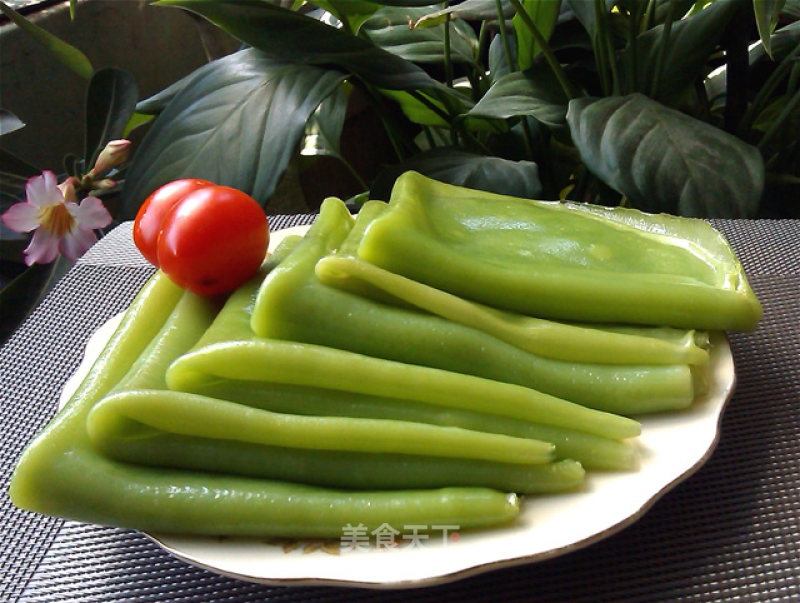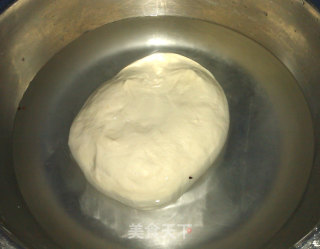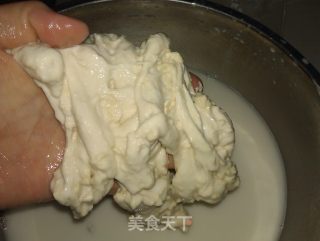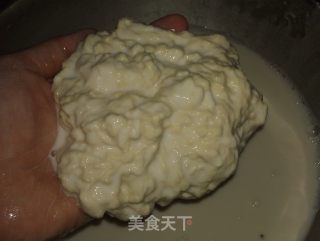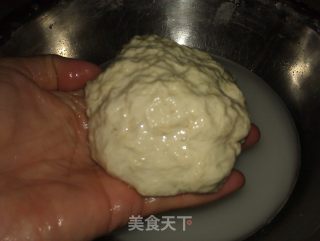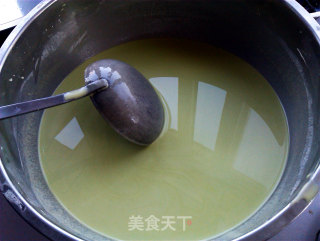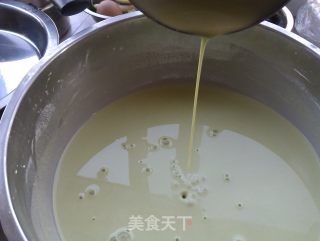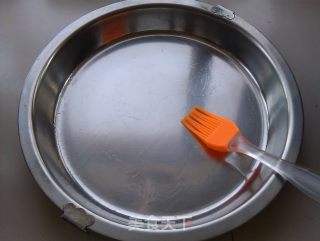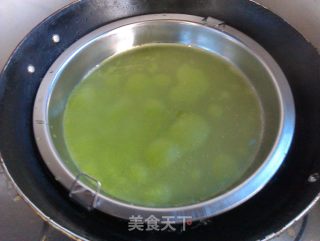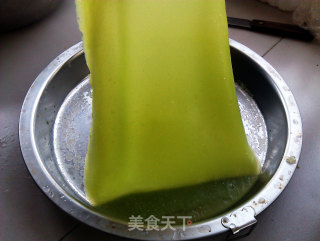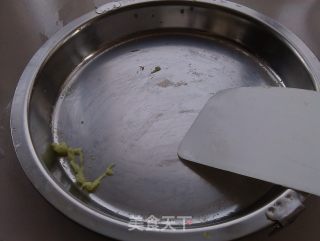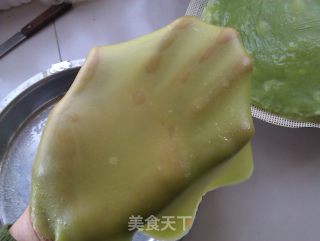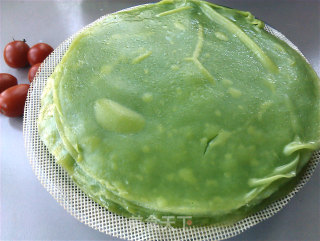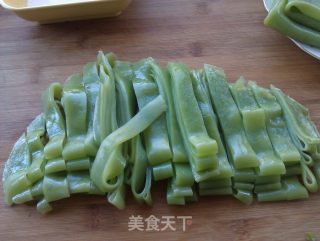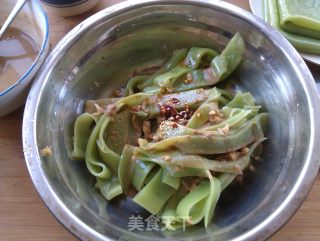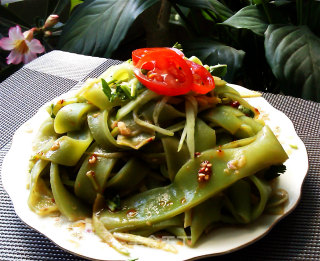Emerald Cool Leather
1.
Add 5G refined salt to the flour, add an appropriate amount of water, stir it into cotton wool with chopsticks and knead it into a soft, hard and smooth dough for 15-20 minutes. Put the good dough in a stainless steel basin, add proper amount of water to wash the face
2.
Washing for the first time: Wash the starch in the dough under the rubbing method, the water in the basin will gradually become a thick batter. After removing the gluten, filter the noodles with a net that filters the soy milk. A little bit of gluten is combined with a large group of gluten.
3.
Add appropriate amount of water, and put the gluten washed out for the first time in the water to continue washing. Wash three times in total
4.
After the third wash, the water is clear and clear, and the face wash is over
5.
Three times the facial cleanser is collected in the pot
6.
Wash 200 grams of spinach to control the moisture and cut into small pieces. Use a juice machine to squeeze the spinach juice.
7.
The raw spinach juice is filtered through a fine mesh to filter out the small vegetable residues, and the spinach juice is poured into the dough and stirred evenly. Cover the lid and let the batter settle overnight. The deposited batter is the upper layer of clear water and the lower layer of wheat starch. Pour out the upper layer of water slowly, and the rest is the material for us to make the cold skin.
8.
Re-stir the batter evenly. If the batter is too viscous, you can blend an appropriate amount of water, use a spoon to scoop up a spoonful of the batter and pour it out slowly.
9.
Add a proper amount of water to the pot and bring to a boil. Brush the Liangpi gong with a thin layer of oil with a brush
10.
Scoop more than half a spoon of the batter into the gongs, put the gongs on the boiling water in the pot, and rotate them evenly until the batter is full. Cover the pot and steam for 1 minute until the surface foams, and a piece of cold skin is steamed. Up
11.
Prepare a basin larger than the diameter of the gong and add half a basin of cold water. Take the gong and gong out of the pot and immediately soak it in the cold water. After the gong is completely cooled, slowly peel off the cold skin from the side by hand. Just steam all the cold skin
12.
If there is some residue on the surface of the gong after peeling off the cold skin, you can scrape it off with a scraper and brush with thin oil.
13.
The turquoise cool skin is crystal clear and full of elasticity.
14.
Put the peeled cold skin on a pan or a plate, brush the surface with a thin layer of oil, the second and third. . . Apply a thin layer of oil on each sheet to prevent sticking together
15.
According to personal preference, mix with sesame sauce water, garlic vinegar water, cucumber shreds, mung bean sprouts, coriander, oily pepper, etc.
16.
Cut the cold skin into strips,
17.
Mix
18.
Mixed jade cold skin
Tips:
1. After washing out the gluten, the flour paste should be fully precipitated, pour out the excess water on the surface, and then adjust the proper consistency. It usually takes one night to settle.
2. The dried noodle paste should be thin and thick enough to make a good cold skin. If the paste is too thick, the steamed cold skin will be too thick and it will not look good. On the contrary, the cold skin steamed by the thin paste is not easy to be exposed, it is fragile, lacks elasticity, and has poor toughness.
3. The batter poured into the Liangpi gong is steamed to produce large bubbles on the surface and then it can be taken out of the pot for cooling.
4. Usually need to prepare two gongs with cold skin, one is steamed and cooled, and the other is steamed at the same time, which saves time and is efficient in rotation.
5. Liangpi can’t stay overnight. If it’s steamed on the same day, eat on the same day.

